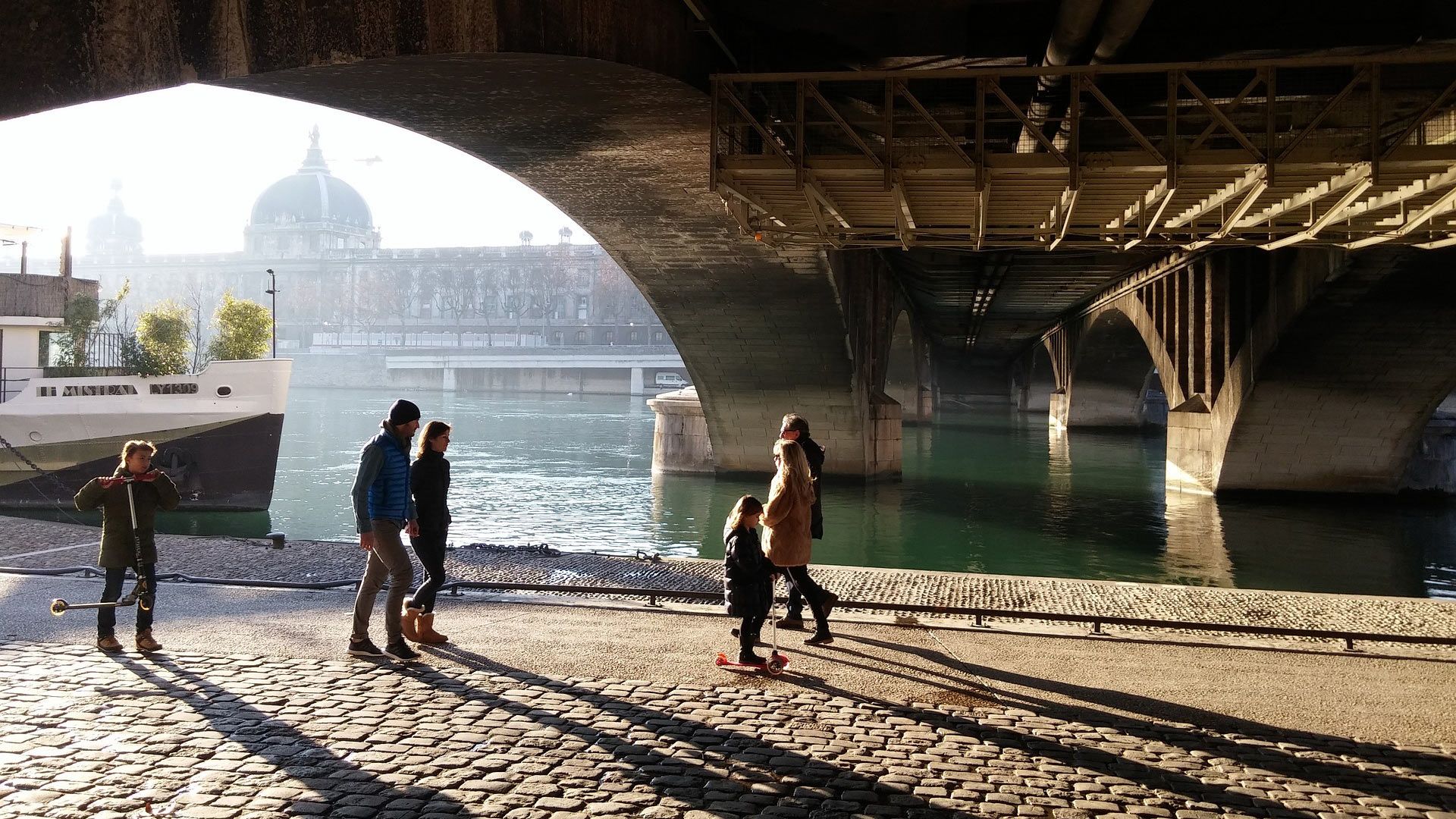France
Lyon
Lyon, the beautiful French city at the intersection of the Rhone and Saone rivers, is expecting some changes.

4 Levels of Action - Lyon’s Progress Towards the Principles
Regenerative Water Services
• Infiltration of stormwater at sources as in the water regulation and now in the urban masterplan
• Reduce water loss in the network and reduce the use of water by the solid waste department
• New regulation in the urban masterplan to encourage the reuse of rainwater
• A single Metropole department for the urban water cycle including stormwater management and protection of aquatic environment in the 59 municipalities.
• This department works very closely with the other urban services departments and produces maps and regulations for the urban masterplan.
• Work is focussed to reduce vulnerability and control the increase of risk
Water Sensitive Urban Design
• The permeable city project is developing new approaches to i) implement more best management practices and ii) extend the use of green infrastructure to infiltrate stormwater
• Maps of risks and regulation for minimum floor level in new buildings in high flooding risk areas
• Restoration and renovation of river banks along the Rhône and Saône rivers, and in Lyon Confluence new district
• Zero phyto measures (i.e. no pesticides) in progress! Use of biofilters and constructed wetlands to treat overflows
Basin Connected Cities
• Include in the urban masterplan the water resource protection zones
• Lyon Metropole water department is developing guidelines and regulations since 2008
• Maps of global rainfall risk and related regulation are included in the urban masterplan
Water-Wise Communities
• Large projects are open for public consultation
• Founding and active member of GRAIE, a French NGO based in Lyon, which aims to transfer and share knowledge and practices on urban water systems and management between researchers, municipalities, consulting companies, public and private utilities, and administrations.
• Lyon Metropole is also working closely with the multidisciplinary academic laboratory of excellence IMU – Intelligence of Urban Worlds, which includes both engineering and social sciences.
• The Porte des Alpes project was developed with a multidisciplinary team
• Collaboration between all departments of Lyon Metropole
• Leaders promote & support the project of Lyon as a “permeable city”
City Water Stories
Amsterdam
Since a cloudburst in the summer of 2014 and many more severe cloudbursts since then in other regions of the Netherlands, the urgency for a way to adapt this buzzing international city grew. Hence Waternet, the well-known innovative water utility of Amsterdam and its surroundings, created Amsterdam Rainproof.
Brisbane
In the past two decades, Brisbane has experienced the millennium drought (1995 – 2009) and two significant floods (2011 and 2013), and as a subtropical city it is also affected by frequent and severe storms.
Copenhengen
Copenhagen is a northern harbour city which has experienced a number of severe rainfall events, namely cloudbursts, with the largest pouring down in July 2011. The damages amounted to around 1 billion US dollars, and climate projections predict even larger events in the future. Protecting citizens and businesses from the impacts of climate change, while also continuing to secure high quality drinking water for a growing population are the concerns related to water.
Dakar
Dakar’s urban population is exploding with an annual growth rate of 2.5% and urbanisation rate of 97.2%. This massive urban expansion leads to overpopulation and construction in restricted areas, creating illegal slums without planned infrastructure including proper drainage and sewage systems.
Gothenburg
Built into a low-lying swamp area near the Göta River estuary, Gothenburg finds itself in a strategic yet vulnerable place. Flood risks and sea level rise are the two most important challenges the city is now facing.
Kampala
Kampala is Uganda’s largest city and is located at the periphery of Lake Victoria, Africa’s largest fresh water lake. Kampala is rapidly growing, with economic opportunities driving the rural-urban migration, and consequently increasing the rate of informal settlements.
Kunshan
Due to the city’s low-lying nature, Kunshan, a city in China’s Jiangsu Province, has faced frequent inundation throughout time.
Perth
Perth is on the frontier of extremes, isolated from all other major cities in Australia on the largely wild west coast. Perth’s declining water availability from both surface and groundwater sources is well recognised.
Shenzhen
The city of Shenzhen was established in 1979, and in a swift 36 years, this tiny border town of just over 30,000 people has grown into a modern metropolis. However, rapid urbanization has brought with it many challenges, including serious water crises in the form of stormwater pollution and flood risks.
Singapore
This international port city is no stranger to shifting tides. With limited land to collect and store rainwater, Singapore has faced drought, floods and water pollution in their early years of nation building.
Sydney
The millennium drought affected all of Australia, and certainly it’s star city Sydney. This drought caused serious water security concerns for Sydney in the past, and further strain on the current water supplies is expected into the future.
Xi'an
Xi’an is located in the middle of the Yellow River basin, one of the largest river basins in the world. Even with all this water around, the city still faces severe water shortages for a growing population.
Subscribe to our newsletters
IWA and sector updates
to your inbox
Follow us